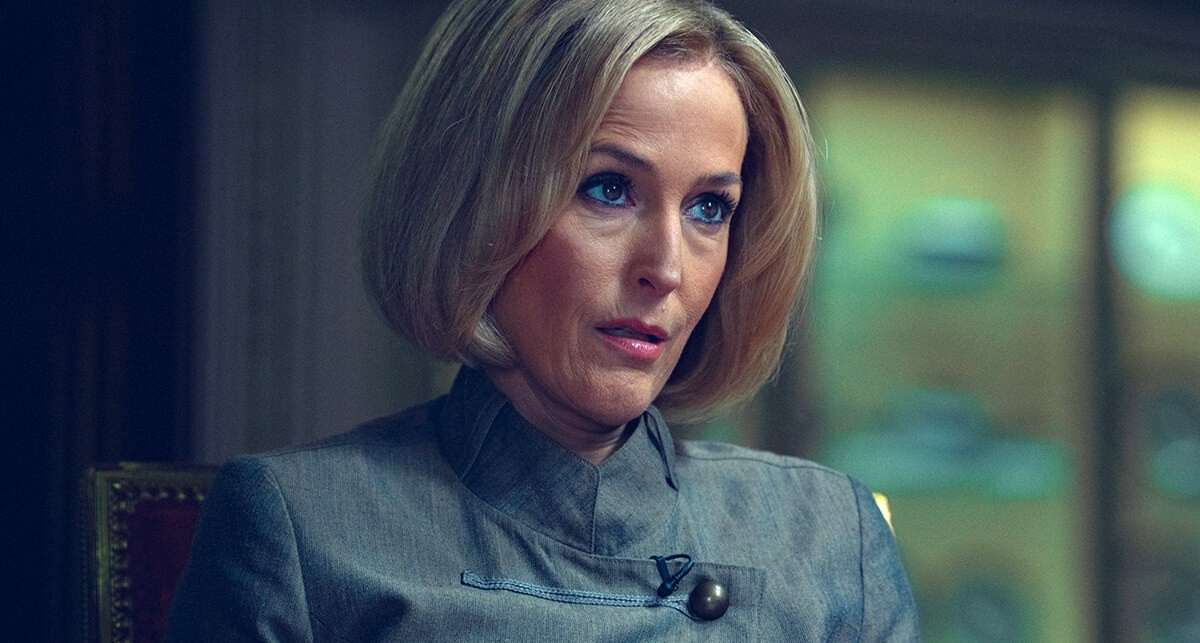From Flight Attendant To Pilot: Overcoming Gender Barriers In Aviation

Table of Contents
Societal Expectations and Gender Stereotypes in Aviation
The Historical Context
For decades, aviation was considered a man's world. Societal norms and expectations largely steered women away from pursuing careers as pilots. The image of a pilot was firmly cemented as male, reinforcing gender stereotypes that limited women's opportunities. Early female aviators faced immense skepticism and often had to fight for recognition and acceptance within a predominantly male industry.
Overcoming Stereotypes
Even today, women in aviation confront internal and external challenges rooted in persistent gender stereotypes. These stereotypes can manifest in subtle and overt biases, impacting everything from career progression to access to training.
- Examples of subtle and overt biases: Women might be overlooked for promotions, receive less challenging assignments, or face unconscious bias during performance evaluations. Overt sexism, though less frequent, can still occur.
- The impact of societal expectations: From a young age, girls may be subtly steered away from STEM fields, including aviation, influencing their career aspirations. Family expectations and societal pressures can further contribute to this trend.
- The importance of challenging traditional gender roles: It is crucial to actively challenge traditional gender roles and promote a culture of inclusivity within the aviation industry to encourage more women to pursue piloting as a career.
Educational Hurdles and Training Challenges
Access to Flight Training
Becoming a pilot requires significant financial investment in flight training. The high cost of flight school and related certifications presents a major barrier for many aspiring female pilots, particularly those from lower socioeconomic backgrounds.
Gender Bias in Training Environments
While flight schools are becoming increasingly diverse, there is still potential for gender bias in training environments. Female students might encounter situations where they feel undervalued, unsupported, or face unfair treatment from instructors or peers.
- The high cost of flight training and potential financial aid options: Scholarships, grants, and loans are available, but finding and securing these resources can be a daunting task.
- The importance of mentorship and support networks for female aspiring pilots: Having female role models and a strong support system can significantly improve a woman's experience in flight school and boost her confidence.
- Examples of initiatives aimed at increasing female representation in flight schools: Several organizations are actively working to create more accessible and supportive environments for women in flight training.
Career Progression and Workplace Challenges
Gender Pay Gap in Aviation
Despite increased female representation, a gender pay gap often persists in the aviation industry. Female pilots may earn less than their male counterparts for the same work, reflecting ongoing gender inequality.
Glass Ceiling and Leadership Opportunities
Women are still underrepresented in senior pilot positions and management roles within airlines and other aviation organizations. The "glass ceiling" effect limits advancement opportunities for women, hindering their professional growth.
- Strategies for negotiating fair compensation and benefits: Effective negotiation skills and a strong understanding of industry pay scales are essential for female pilots.
- The importance of advocating for equal opportunities in the workplace: Speaking up against inequality and advocating for fair treatment is crucial for creating a more equitable aviation industry.
- Examples of women who have broken the glass ceiling in aviation: Highlighting the achievements of successful female leaders in aviation can inspire others and demonstrate the possibility of breaking through barriers.
Inspiring Role Models and Mentorship
The Importance of Female Role Models
Having visible female role models in aviation is critical for inspiring young women to pursue piloting careers. These role models provide proof that women can succeed in this male-dominated field and act as mentors for those who follow.
Networking and Support Systems
Joining aviation-related organizations and support networks specifically designed for women provides invaluable networking opportunities and a sense of community. These groups offer support, advice, and a platform for women to connect and share experiences.
- Examples of prominent female pilots who have achieved success: Showcasing successful women in aviation fosters inspiration and encourages others.
- The importance of mentorship programs for women in aviation: Mentorship offers guidance, support, and encouragement, helping women navigate the challenges of a male-dominated profession.
- The value of networking with other female pilots and aviation professionals: Connecting with others provides emotional support, professional advice, and opportunities for collaboration.
The Future of Women in Aviation
Initiatives Promoting Gender Equality
Numerous initiatives and programs aim to promote gender equality in aviation. These range from scholarships and mentorship programs to diversity and inclusion training for aviation companies.
The Need for Continued Advocacy
While progress is being made, continued advocacy and support are essential to ensure a truly inclusive and equitable future for women in aviation. This requires a concerted effort from individuals, organizations, and government entities.
- Examples of successful diversity and inclusion programs in aviation: Highlighting successful programs provides concrete examples of positive change.
- The role of government regulations and policies in promoting gender equality: Legislation and policy can play a critical role in creating equal opportunities.
- The need for continued efforts to break down gender barriers in the aviation sector: This requires ongoing commitment from all stakeholders to foster a more diverse and inclusive aviation industry.
Conclusion
The journey "From Flight Attendant to Pilot" represents a significant challenge for women, but also a testament to their resilience and determination. Overcoming societal expectations, navigating educational hurdles, and facing workplace barriers requires strength, perseverance, and a supportive network. The key takeaways are the importance of mentorship, access to resources, robust support networks, and continued advocacy for gender equality in aviation. We encourage you to learn more about careers in aviation, support initiatives promoting gender equality, and consider pursuing a career as a pilot, becoming a pilot, or embarking on a career as a pilot – the sky's the limit! Explore resources like [link to flight school], [link to aviation organization for women], and [link to mentorship program] to take the first step toward a rewarding career in aviation.

Featured Posts
-
 Doom Eternal Waiting Room A Dark Ages Playlist To Power Through The Load Screens
May 12, 2025
Doom Eternal Waiting Room A Dark Ages Playlist To Power Through The Load Screens
May 12, 2025 -
 Masazystka Ksiecia Andrzeja Szokujace Wydarzenia I Reakcja Ksiecia Williama
May 12, 2025
Masazystka Ksiecia Andrzeja Szokujace Wydarzenia I Reakcja Ksiecia Williama
May 12, 2025 -
 Growth Trajectory Of Canadas Leading Natural Gas Producer
May 12, 2025
Growth Trajectory Of Canadas Leading Natural Gas Producer
May 12, 2025 -
 Mullers Last Dance Bayern Win And Celebrate At Home
May 12, 2025
Mullers Last Dance Bayern Win And Celebrate At Home
May 12, 2025 -
 Rencontre Inattendue Sylvester Stallone Decouvre Mon Travail
May 12, 2025
Rencontre Inattendue Sylvester Stallone Decouvre Mon Travail
May 12, 2025
